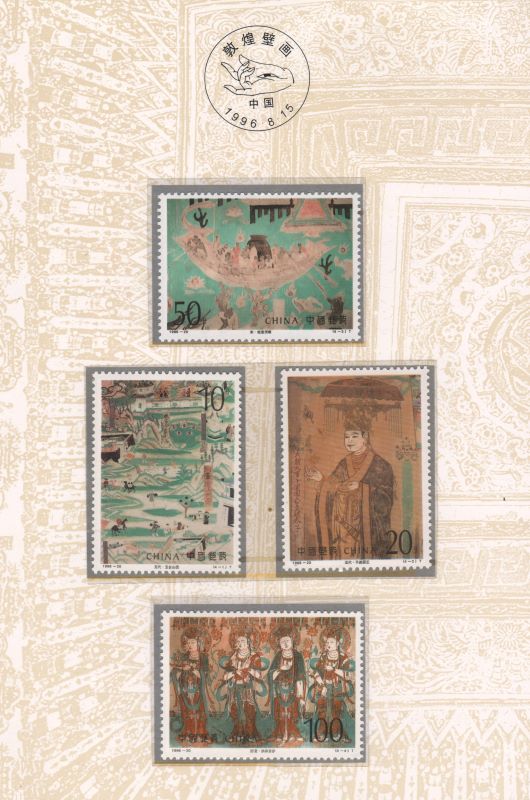WORLD BUDDHIST STAMPS e.GALLERY
bringing the buddhist world at the comfort of your home
| Dunhuang Murals (6th series) | |
Located on the west edge of the Hexi Corridor in western Gansu, China, Dunhuang Grottoes, always known as a "Buddhist art treasury", is one of the country's largest ancient grotto group, a key cultural relics unit under State protection. The Dunhuang Grottoes in a broad sense include the Dunhuang Mogao Grottoes, the Xi Qianfodong Grottoes, Yulin Grottoes in Ansi, Qianfodong Grottoes in Shuikouxia, which are usually referred to as Mogao Grottoes. The Mogao Grottoes were inaugurated in the 2nd year of Jian Yuan of the early Qin Dynasty (AD 366), but the earliest grottoes extant were dug during the sixteen Kingdoms of Bei Ling (421 to 439 AD). The construction of the grottoes continued in dynasties including Northern Wei (386-534), Western Wei (535-556), Northern Zhou (557-581), Sui, Tang, Five Dynasties and Ten Kingdoms (907-960), Song, Western Xia (1038-1227) and Yuan. The number of grottoes extant totaled 492, and the murals within the grottoes cover an area of about 45,000 square meters; besides there are 2,400 clay sculptures in the Dunhuang Grottoes.
Stamps featuring : Illustration of Mount Wutai, King of Khotan, Savior Avalokitesvara and Worshipping Bodhisattvas. |
|
| Issued Country | China |
| Issued Year | 1996 |
| Category | World Heritage Buddhist Arts |
| Type | Commemorative/Special Stamps |
